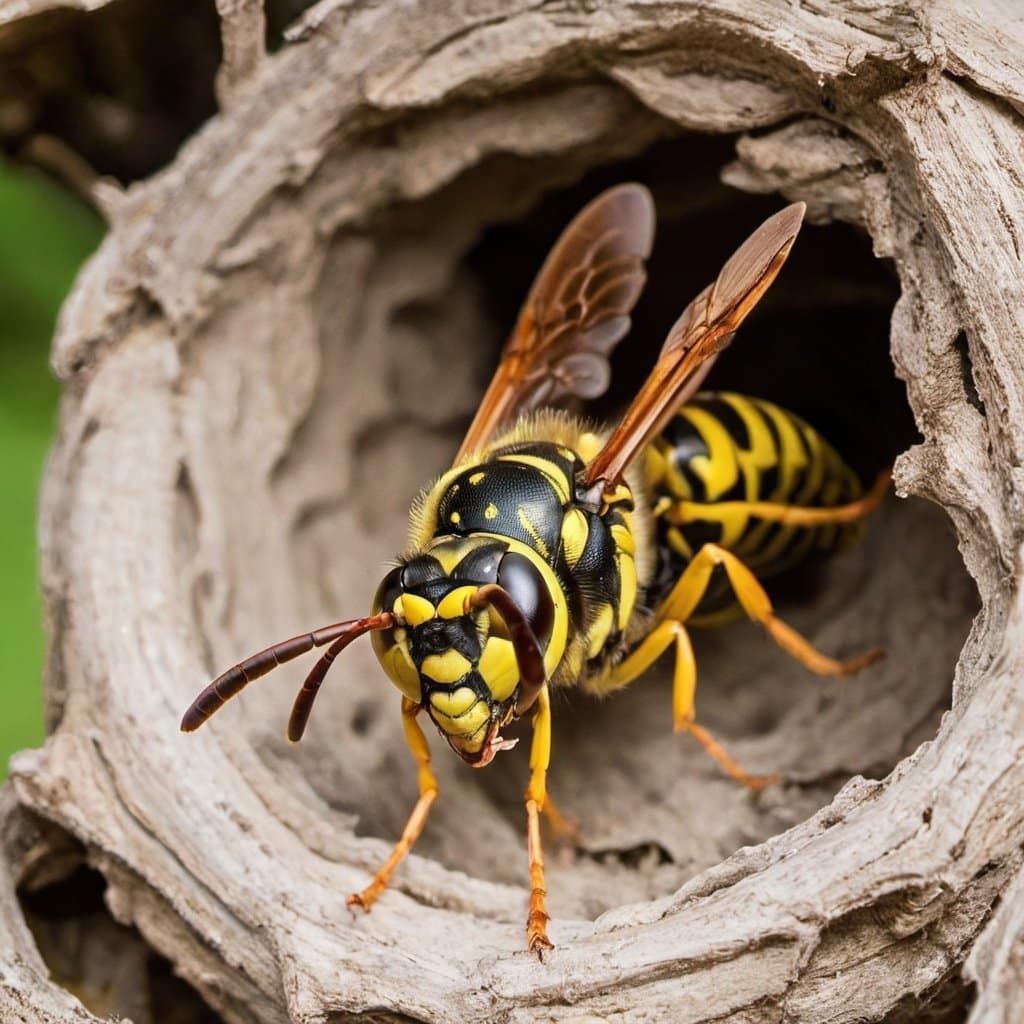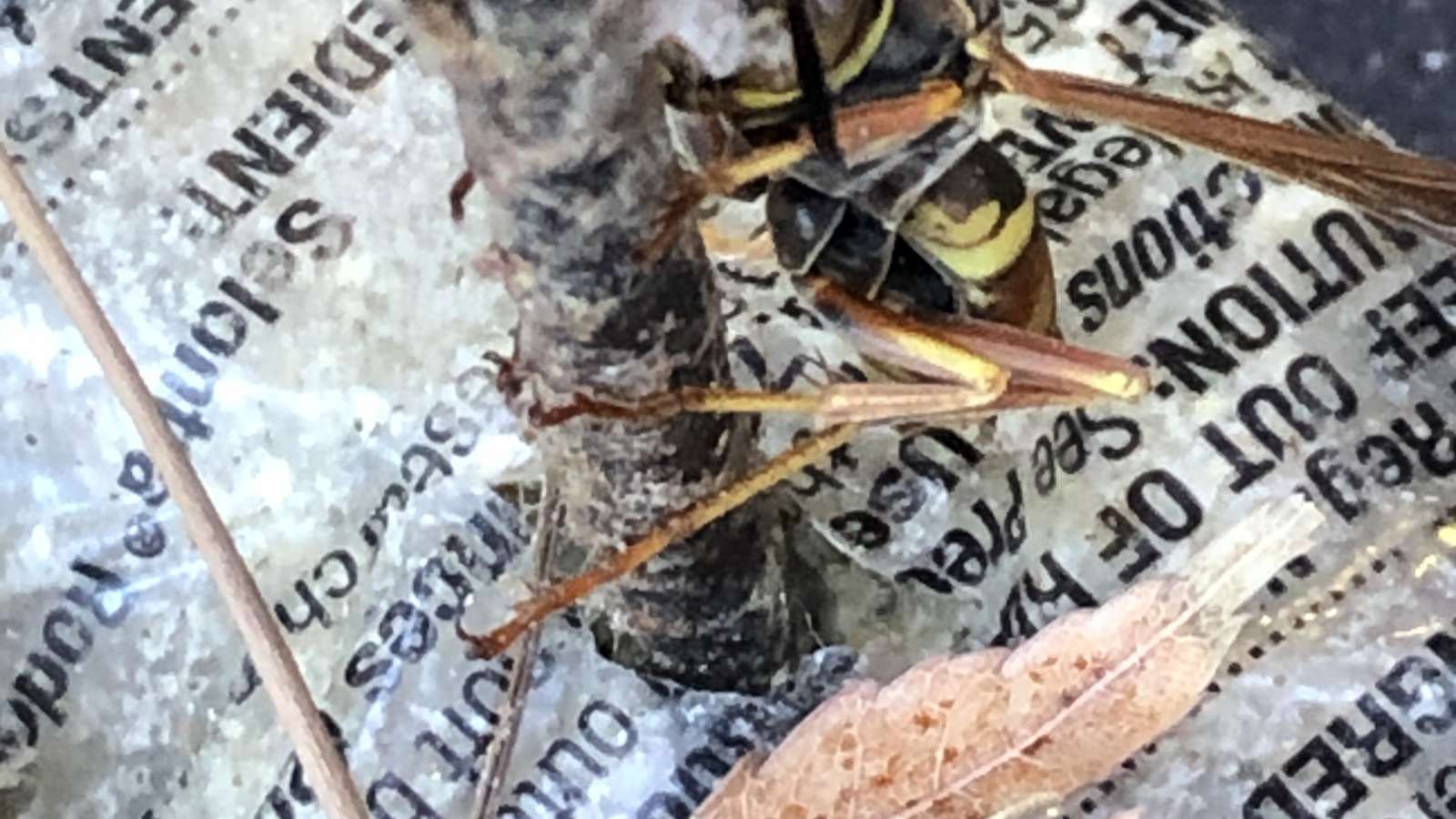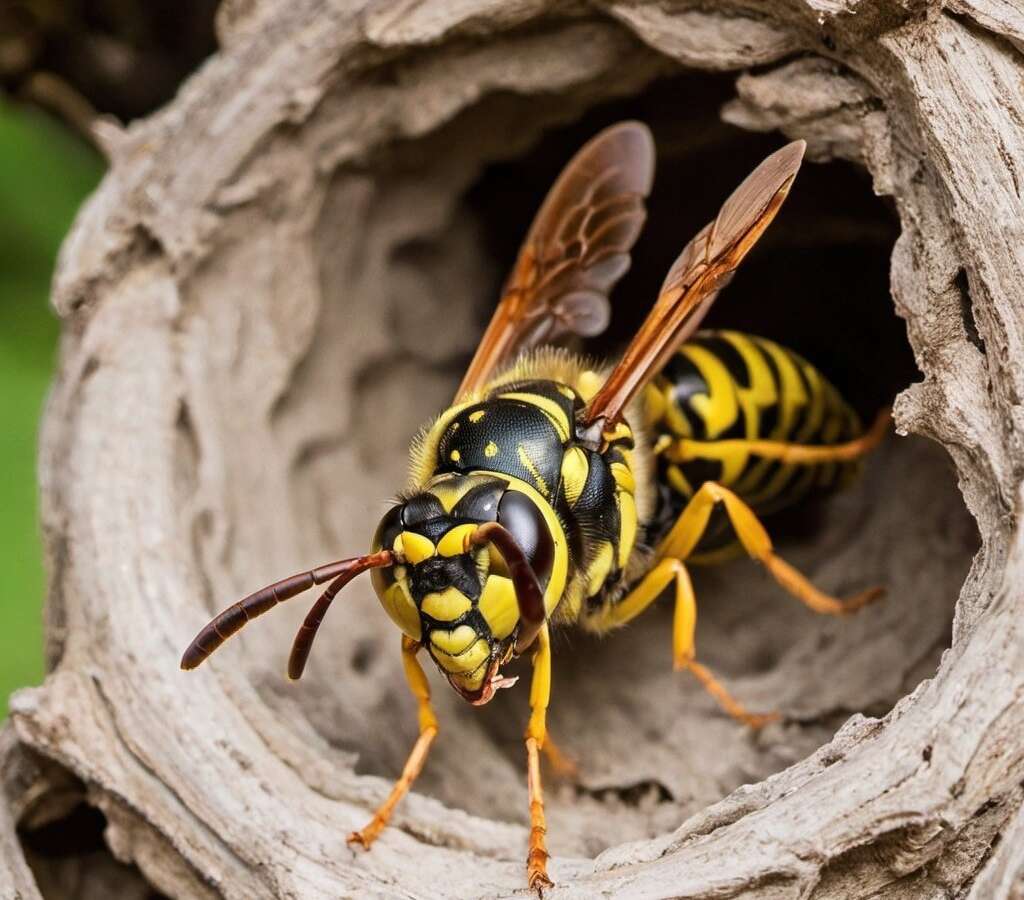The summer is here and insect season is upon us. In my part of the country, Oklahoma pest control companies are busy fighting all sorts of pest issues. Ants, termites, wasps and bees are all coming up on peoples radar. One particular facet of pest control is taking care of wood infesting insects such as termites, carpenter ants and carpenter bees. But one question often asked is do carpenter bees sting? The male carpenter bee does not sting, but the female can.
Male carpenter bees do not have a stinger, but when threatened, or their burrow is threatened, they will dive bomb their assailant. They are large insects and they buzz loudly, so this alone can be intimidating enough to do the job. But the females are the ones to be watched out for. They are not normally aggressive, but if you come too close to their burrow, they will sting.
WHY DO THEY STING?
Carpenter bees are not normally aggressive insects. Only the females can sting, and only will do so when they are threatened. These insects feed on the nectar of plants, so they don’t use their sting for hunting like wasps do. Their stinger is simply used to protect themselves and their young. So if you find yourself in a situation where carpenter bees are hovering close to you, making quick movements or dive bombing you, it is probably a male carpenter bee and you are getting too close to the burrow. If you continue, you will probably find the female and get stung.
The sting of the female carpenter bee is quite painful. Unlike honey bees, the stinger from a carpenter bee is not barbed but smooth. This means that she can sting multiple times. This is unlikely, though, because most carpenter bees will sting once and then fly away. Like honey bees, the sting contains melittin which causes a severe burning sensation. There is no danger in a carpenter bee sting, unless you are allergic to bee stings. In that case, seek medical attention.
CARPENTER BEE LIFECYCLE
Adult carpenter bees spend their winters in old nest tunnels. At the end of spring, males are the first to come out of wintering. These bees are considered solitary bees because they do not colonize or live in a hive. Once the females come out of wintering, they will mate and begin feeding on nectar. Once they have their fill, they will find a good piece of wood to bore into and make a nest.
They will bore around a half inch into the wood, and then turn and start boring with the grain. They will bore anywhere from six or seven inches to over a foot. Then the female will gather nectar and form it into a ball. She will then lay an egg and deposit the nectar ball so that upon hatching, the larvae will have something to eat. She will put around four or five eggs in there and in five to seven weeks, they will be adults. They will continue to use the burrow until next year when the process starts again.
DO THEY MAKE HONEY?
Carpenter bees do make honey, but only enough for themselves and their young. The reason for this is that they are not a colonizing insect. In the case of honey bees, they have many workers, a queen, soldiers and reproductives to feed. So they store their honey so that each bee can get some when its needed. Carpenter bees don’t need to store any honey. As stated above, carpenter bees cap off sections of their burrow with a honey like substance that the hatching larvae will eat through for sustenance and getting out of the burrow.
Carpenter bees also over winter in a hibernation type state. When they come out of this state, flowers are in full bloom, providing as much nectar as is needed. Then they go into hibernation before the end of the nectar season. This means that storing food is just not a necessity. Contact a Tulsa exterminator if you have any issues with carpenter bees.
POLLINATION
On of the major contributions that carpenter bees make is in the area of pollination. These bees are busy going from plant to plant cross pollinating flowers and trees all summer long. It is estimated that bees contribute approximately $29 billion to our agriculture through pollination. That’s a huge amount of money and translates to a huge amount of food. Its doubly important because we depend on pollination for about a third of our food.
One major concern in the area of all bees is shrinking population size. Diseases, pests, pesticides, stress, and malnutrition all contribute to fewer and fewer pollinators every year. State and federal department of agricultures are working tirelessly to keep bees such as the carpenter bee alive and well. We desperately need these pollinators to do their job in the process of providing food for us.
HOW DO I GET RID OF THEM?
As important of a job in pollination that they are doing, it is still important that they are in the right place. Sometimes carpenter bees find their way into homes and businesses where they just can’t be tolerated. Their burrows into our structures can be unsightly. When no other options are available, you may need to call in a Tulsa pest control company. TermMax Pest Control is your one stop shopping place for an Oklahoma pest control company. Feel free to contact us any time for all of your pest control needs. We’re here to help!




